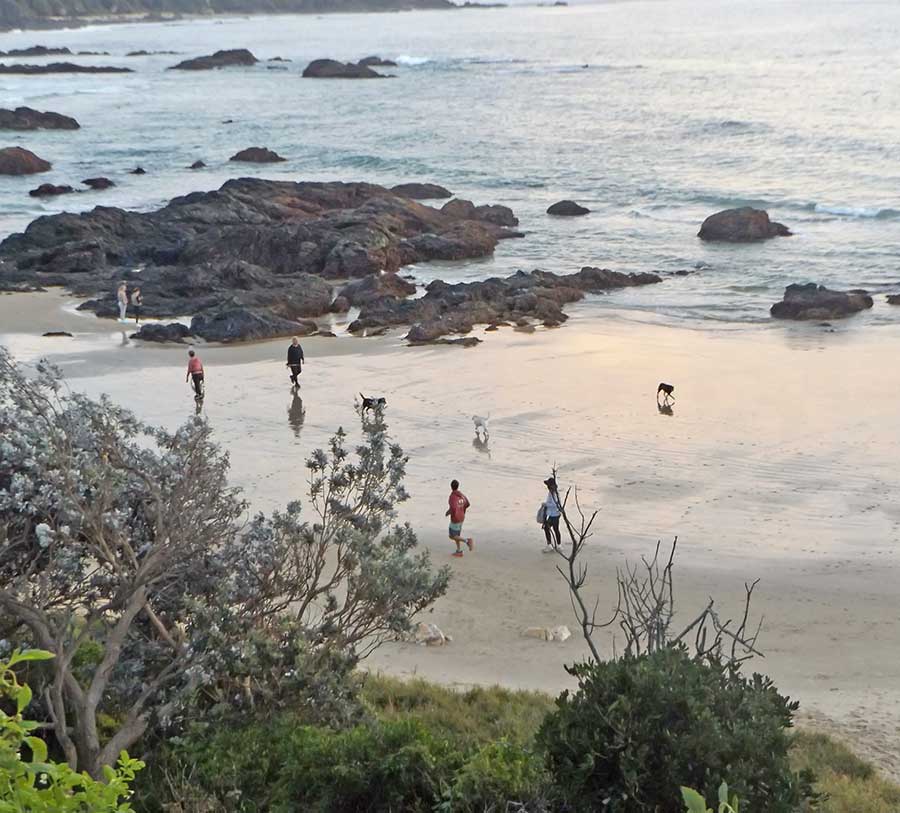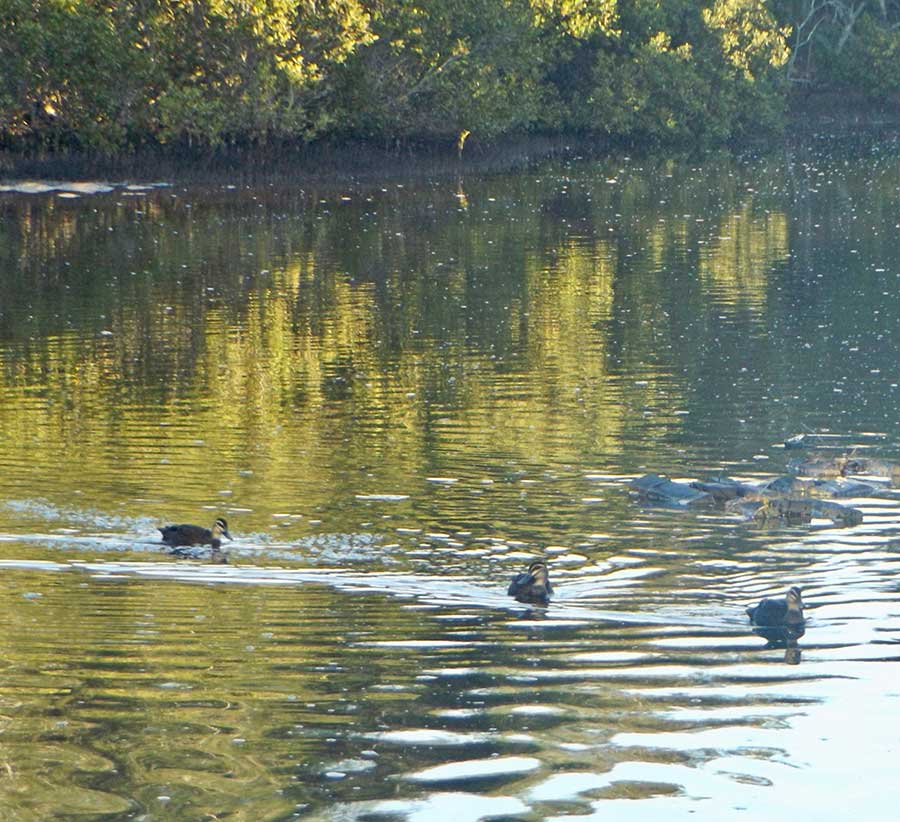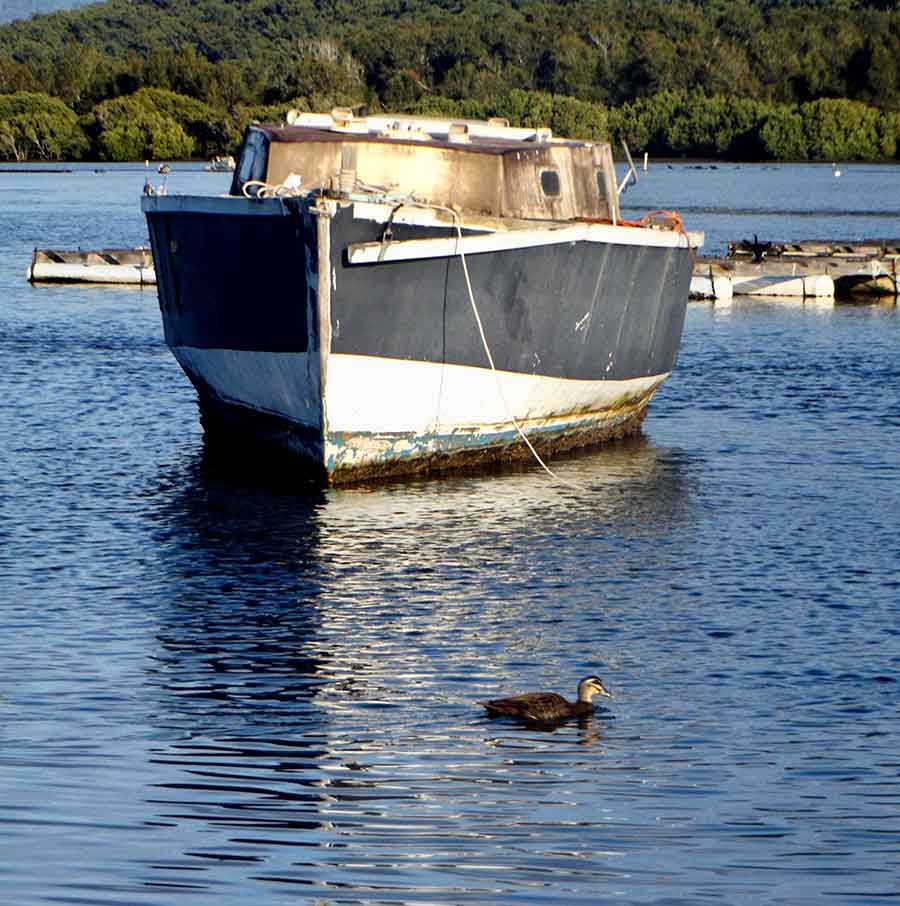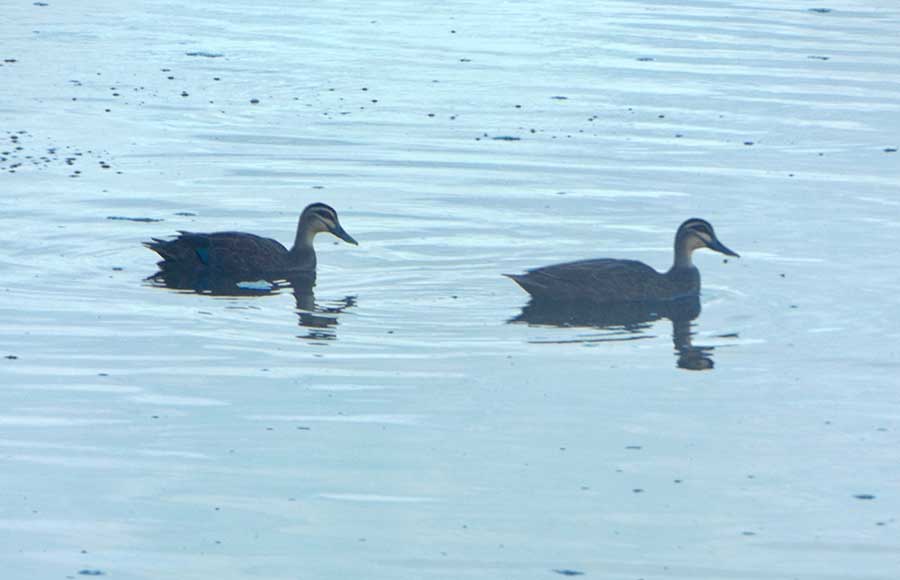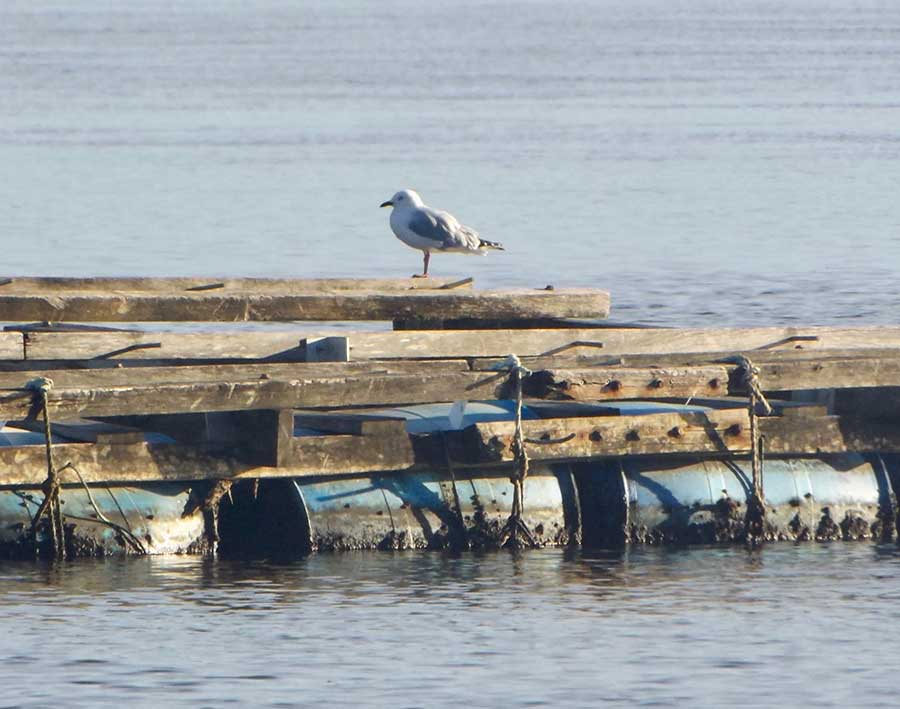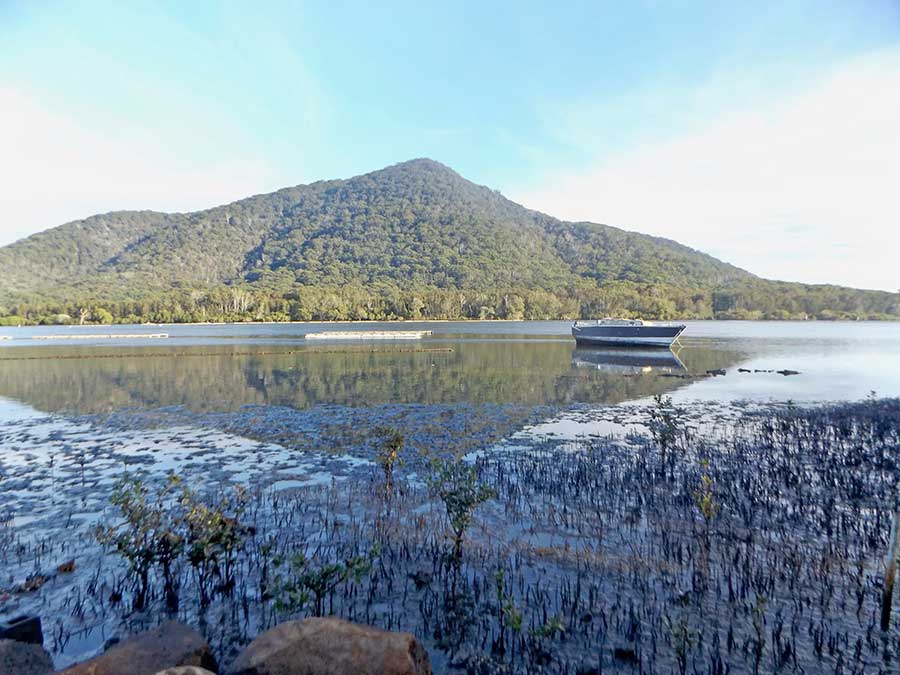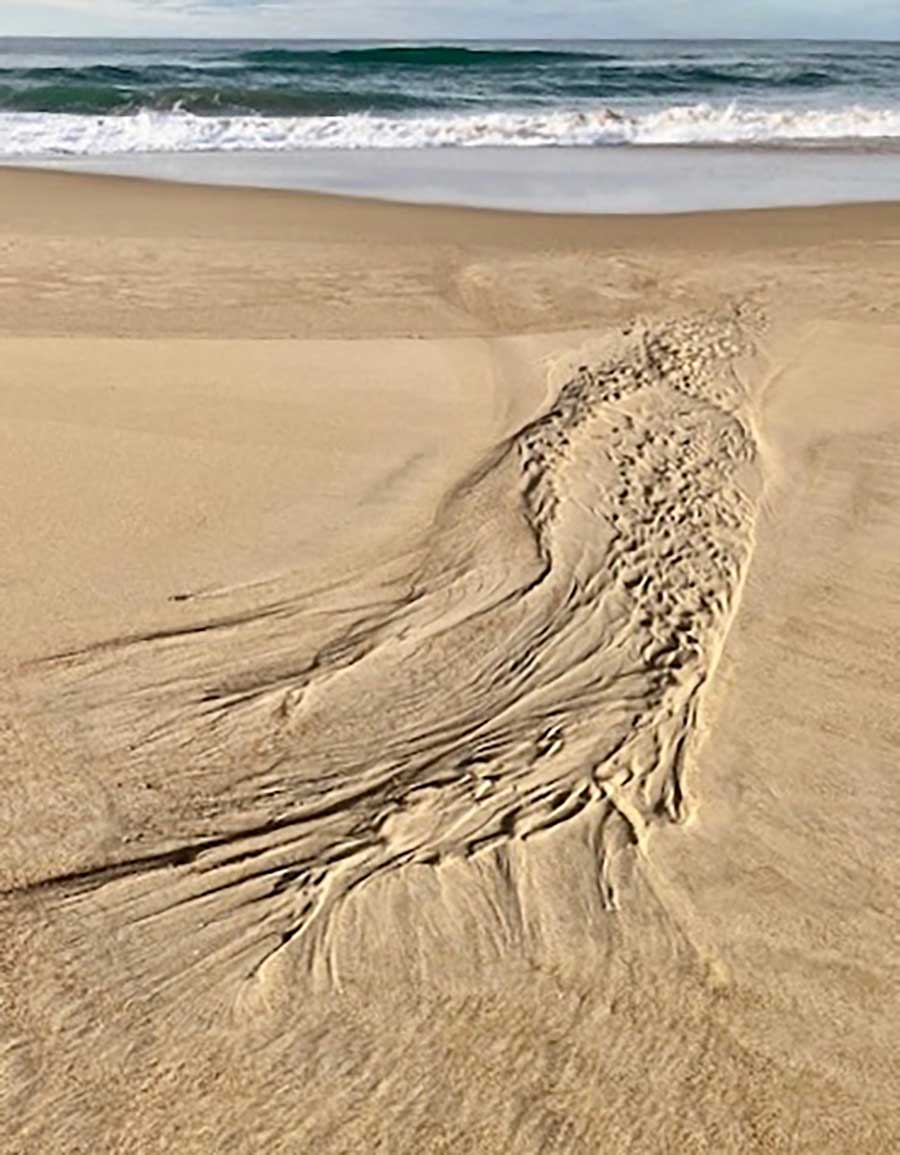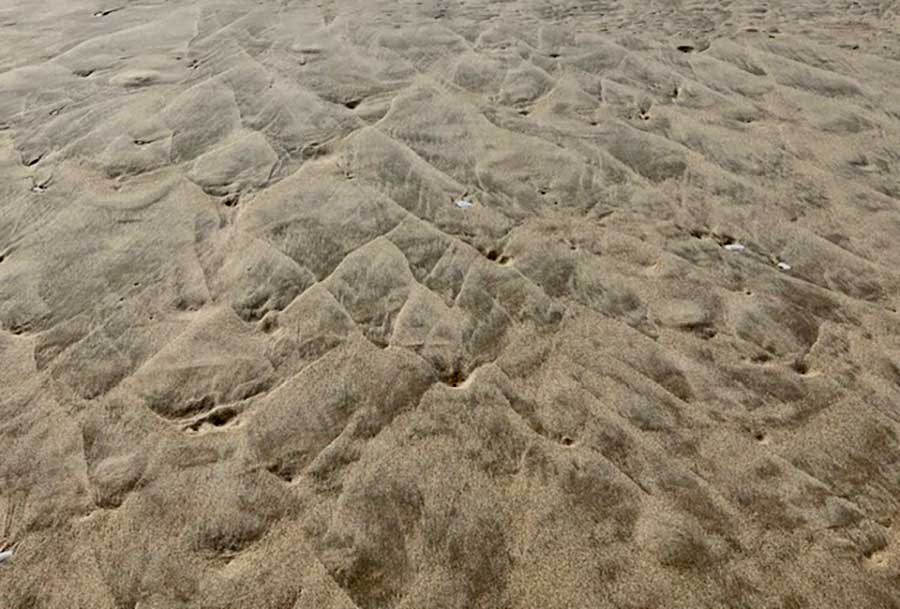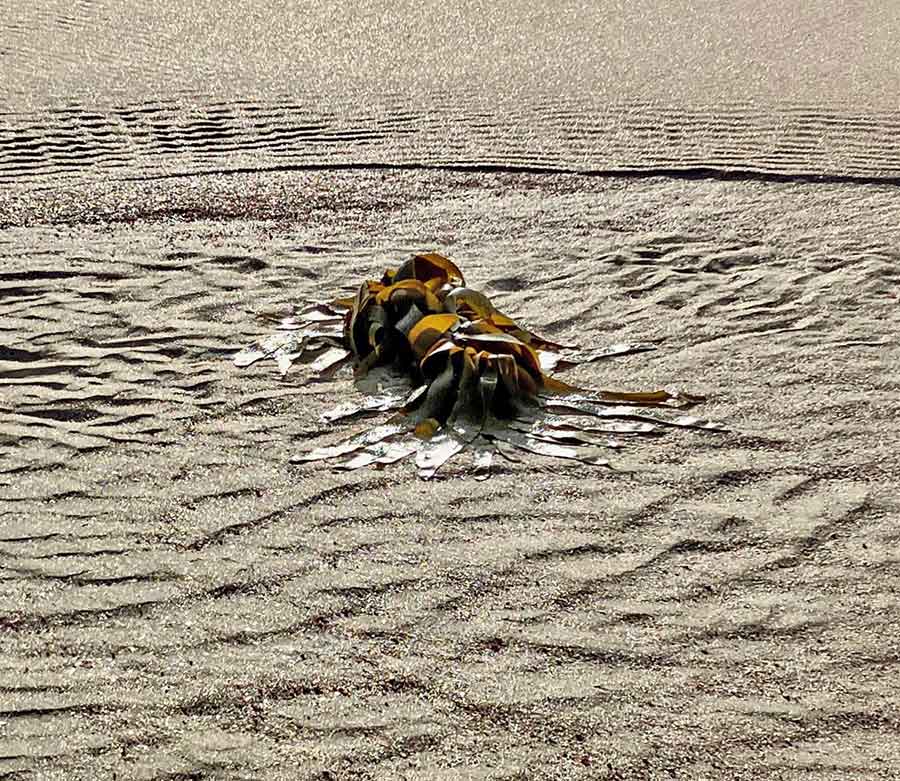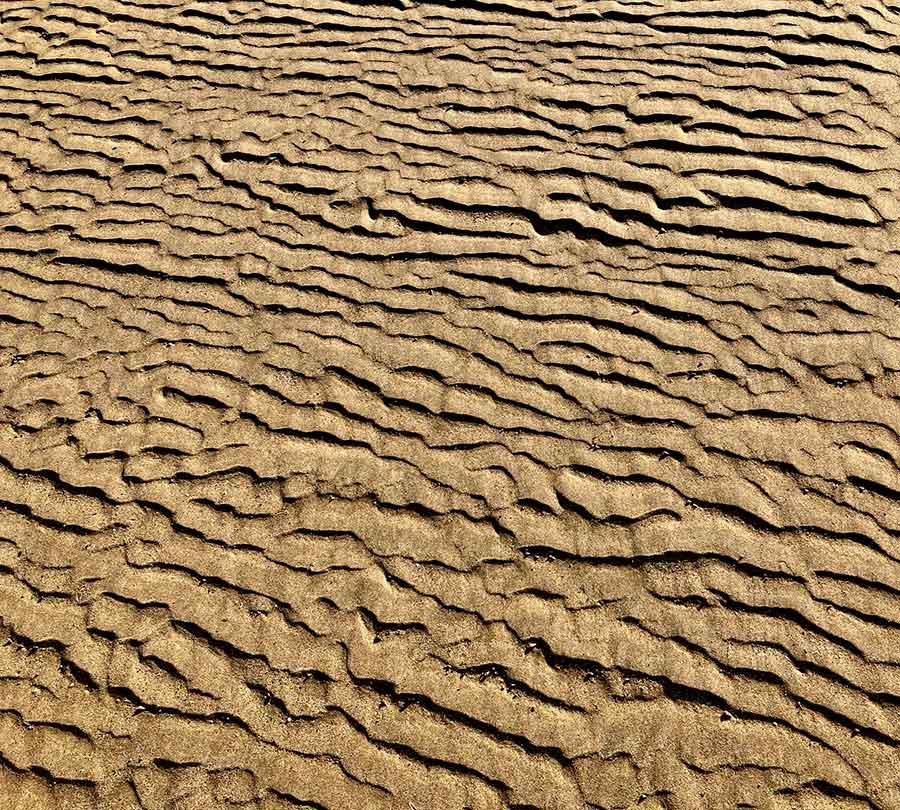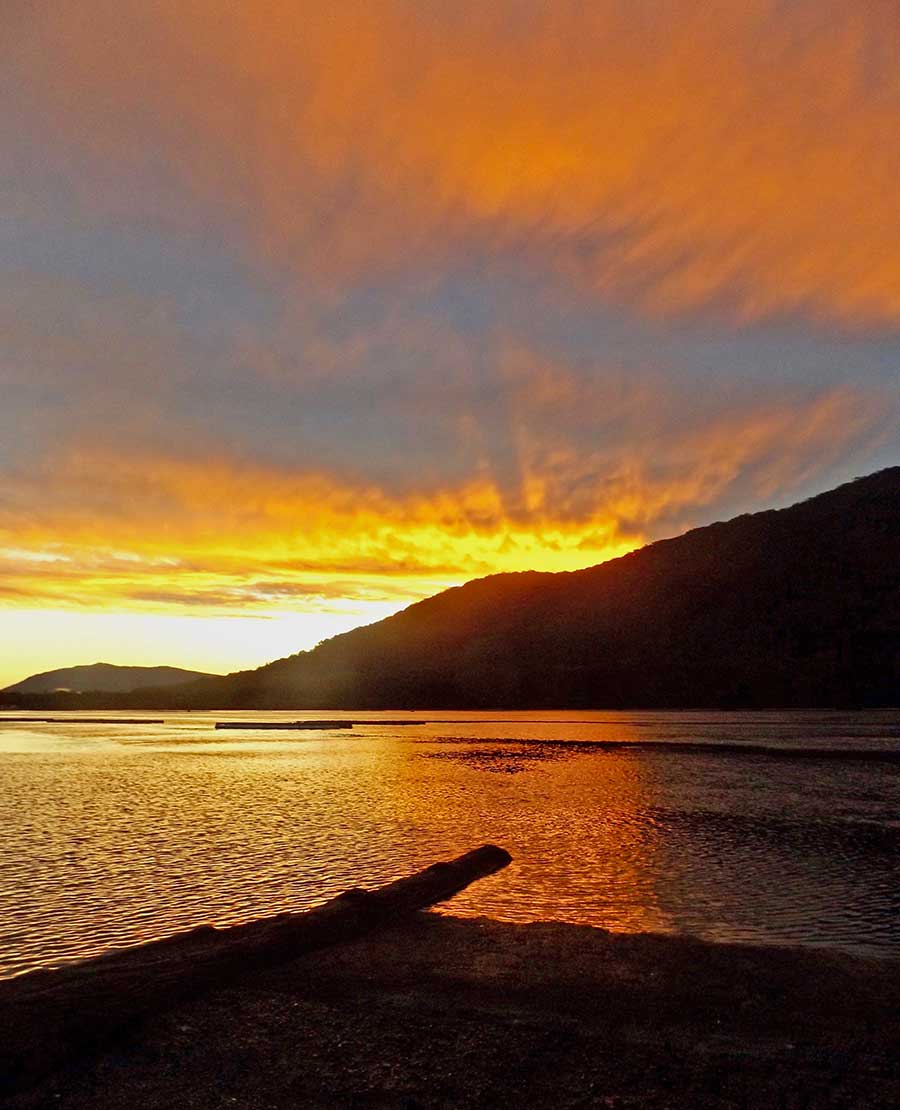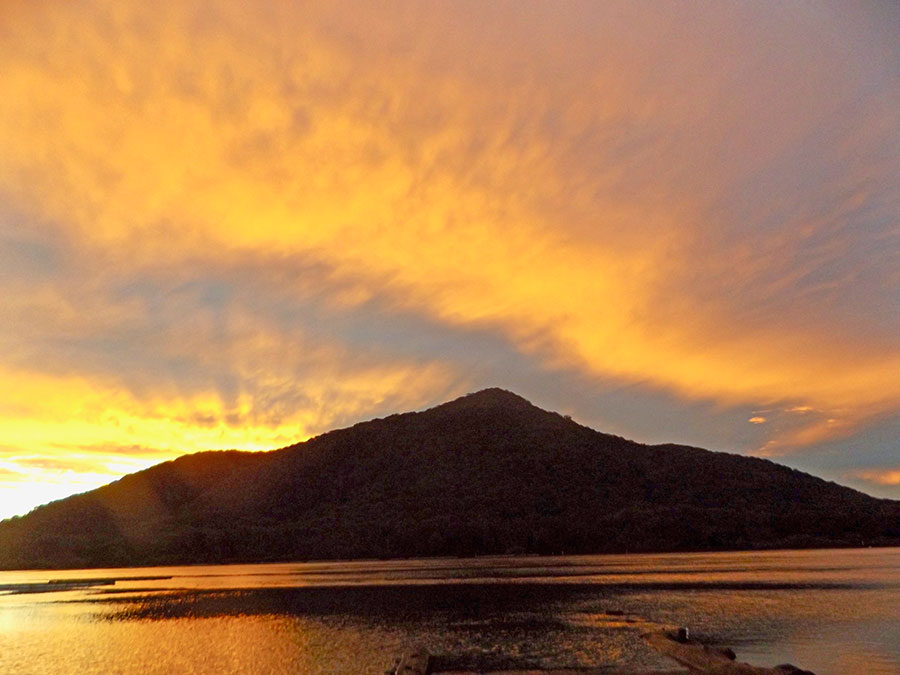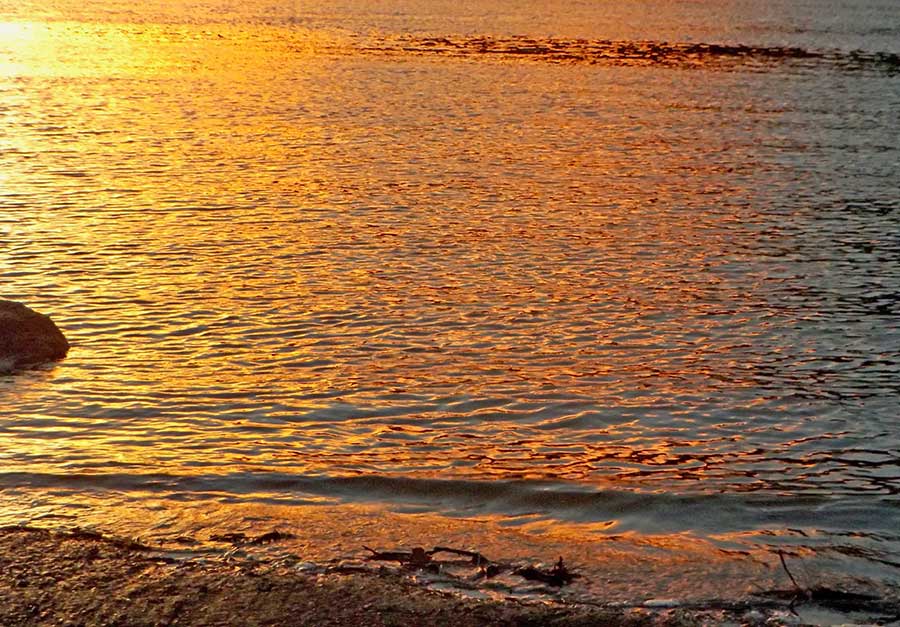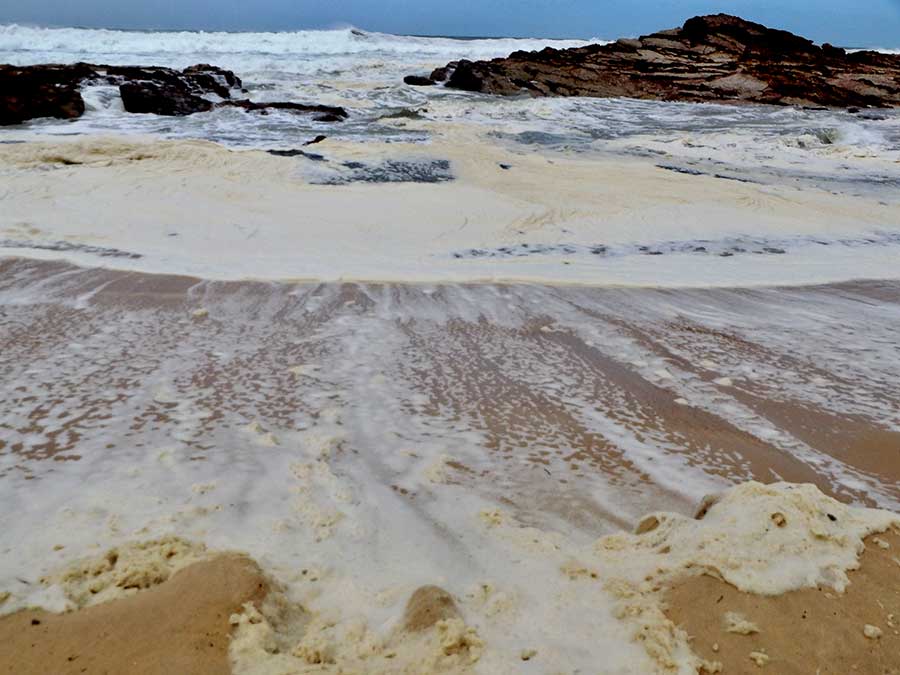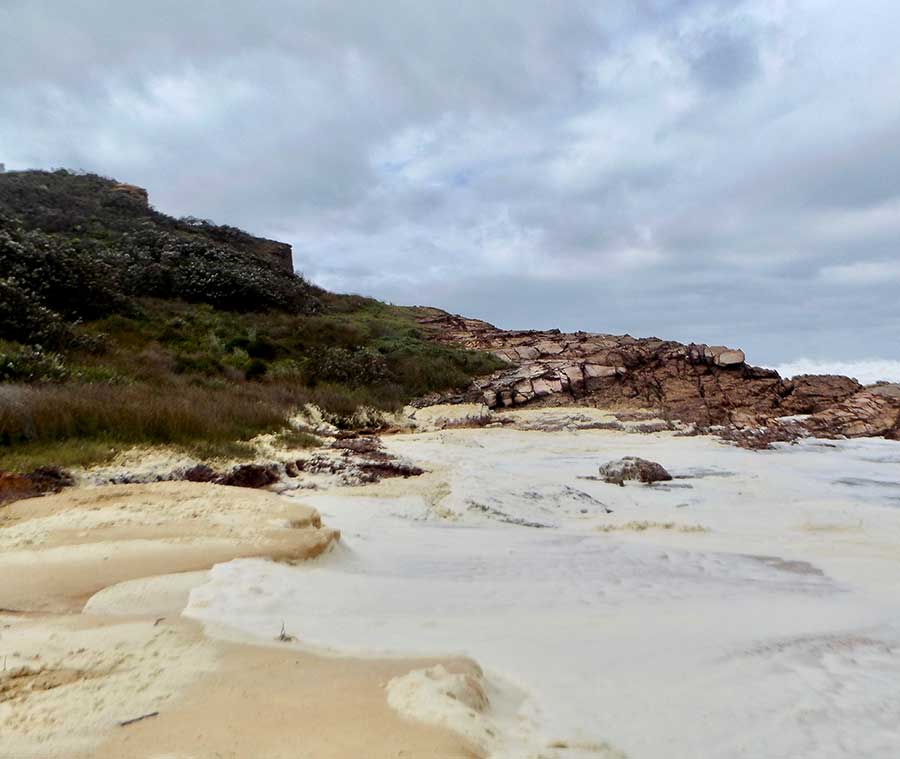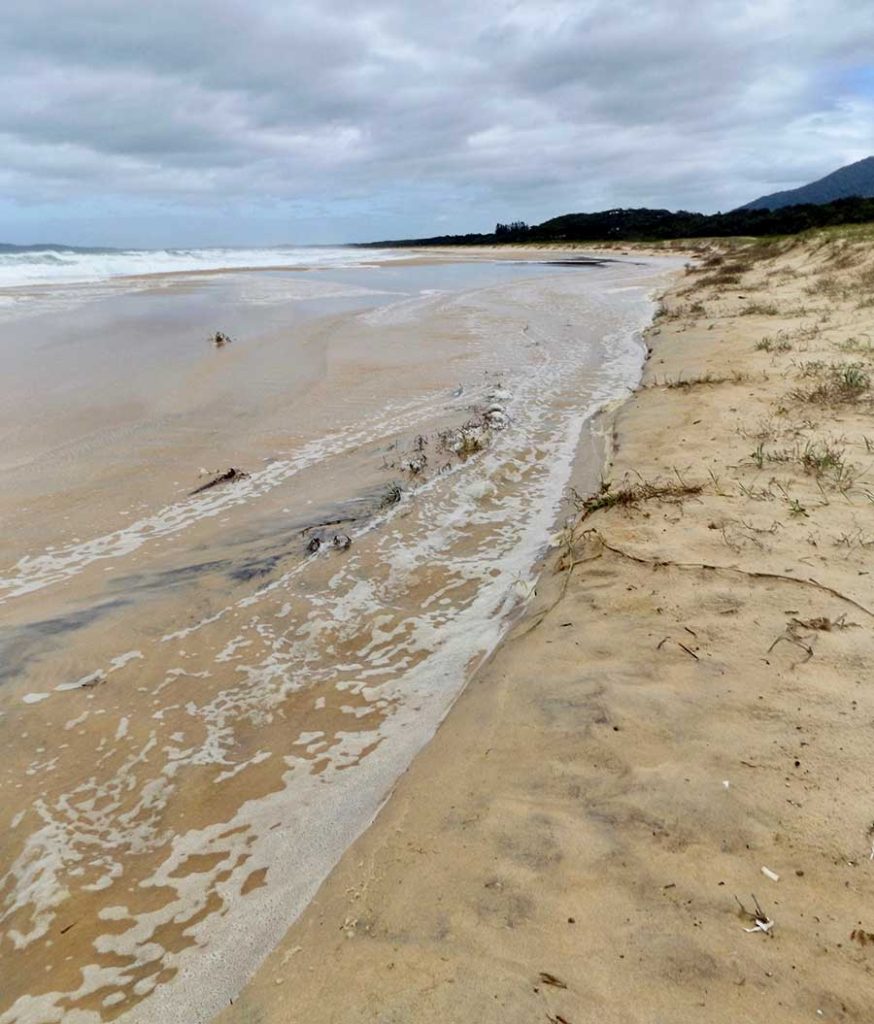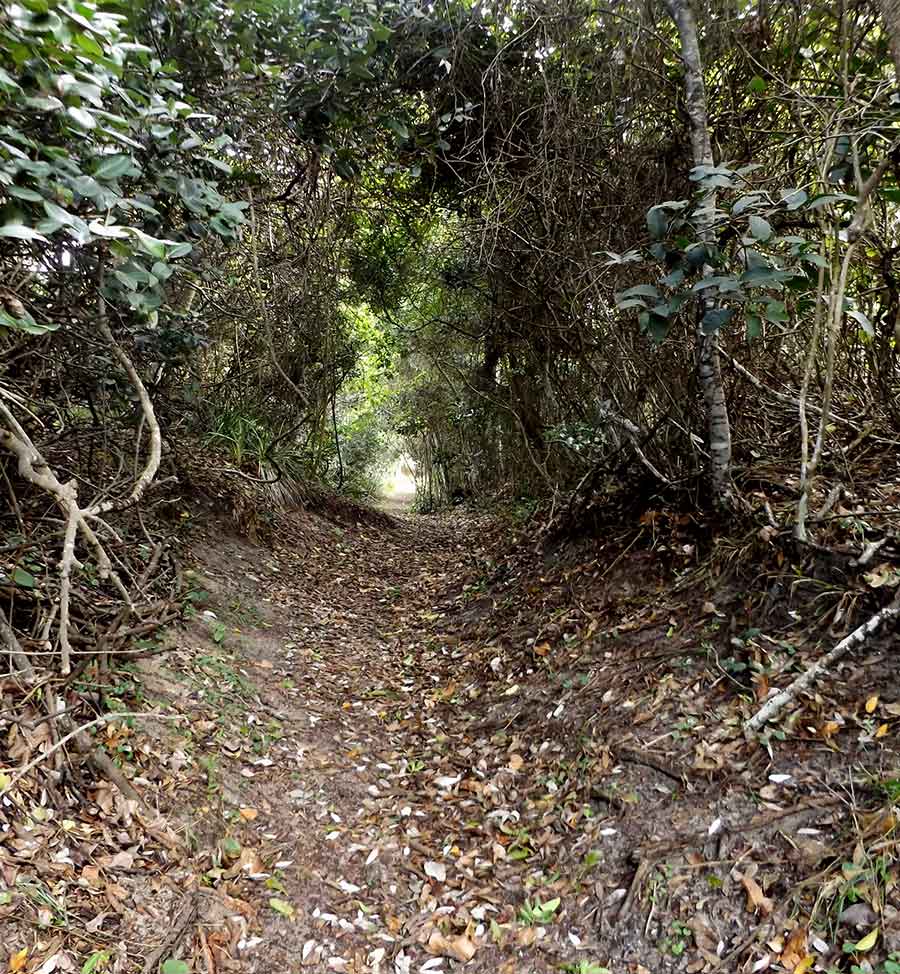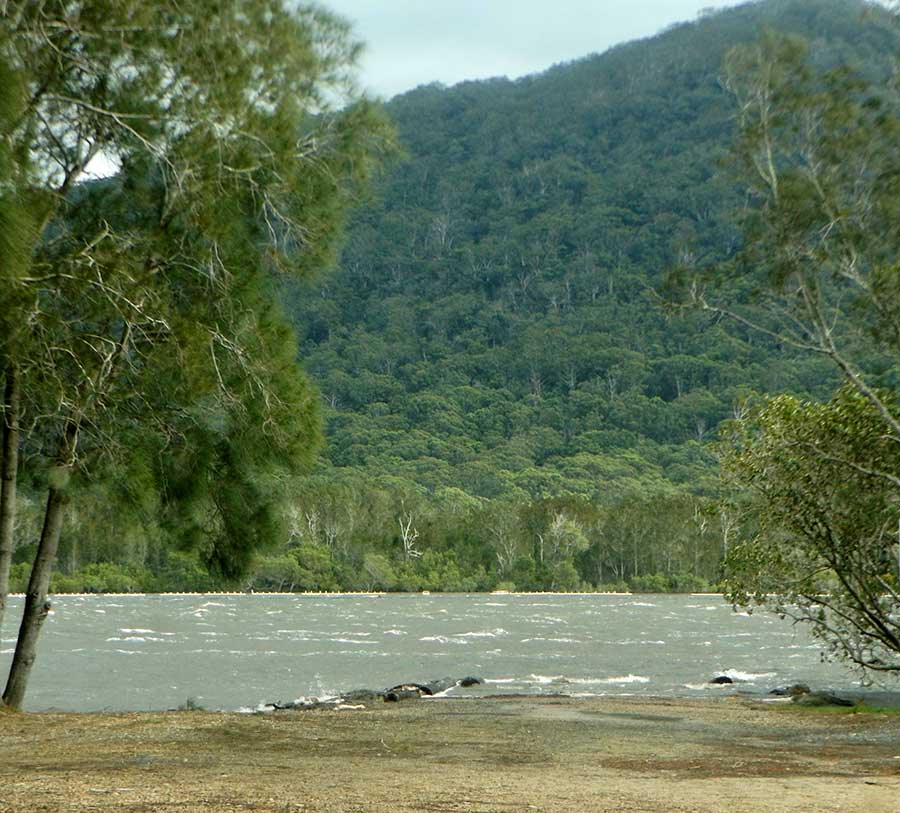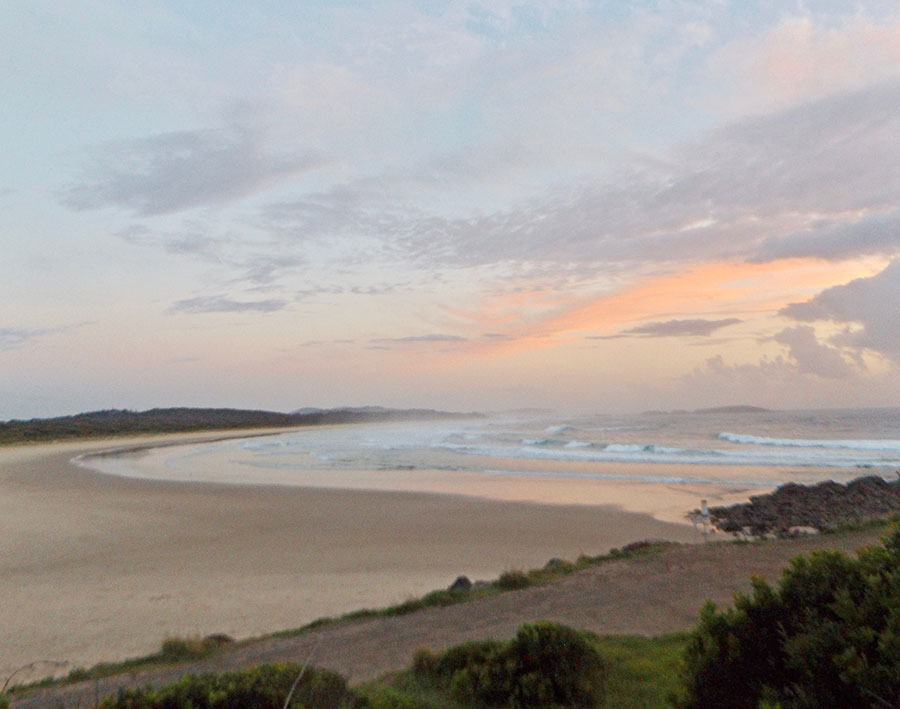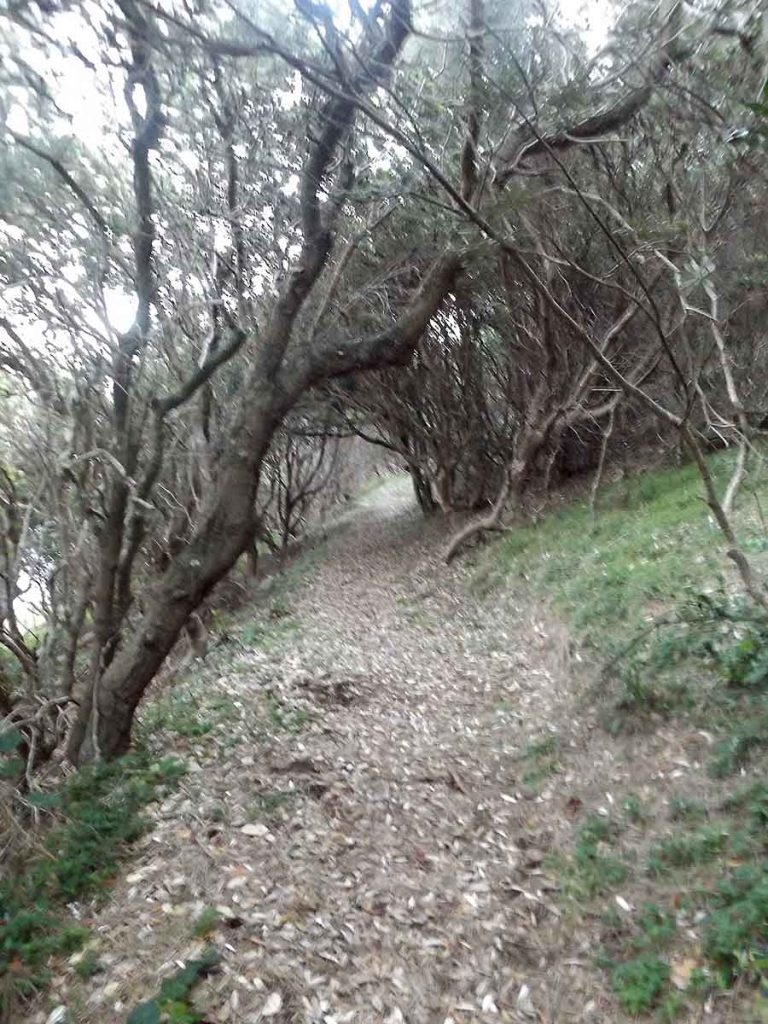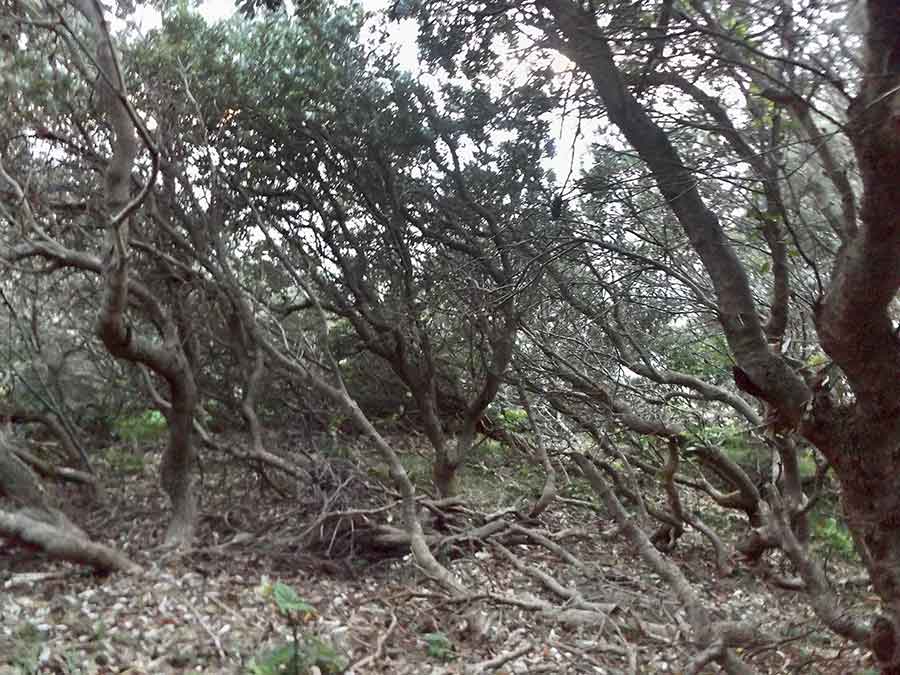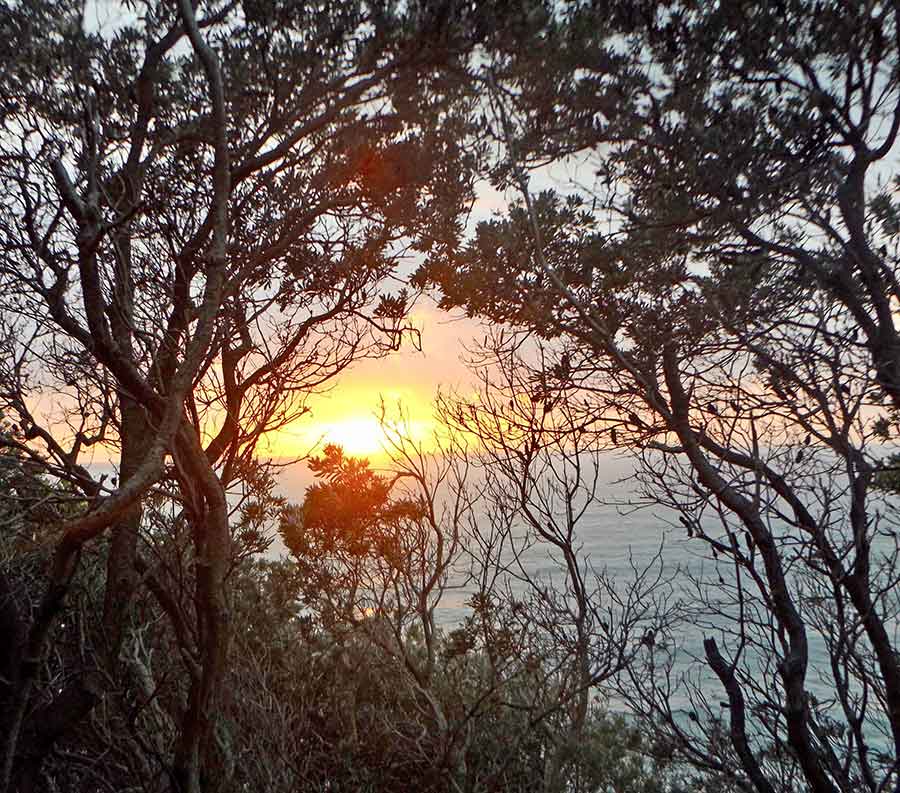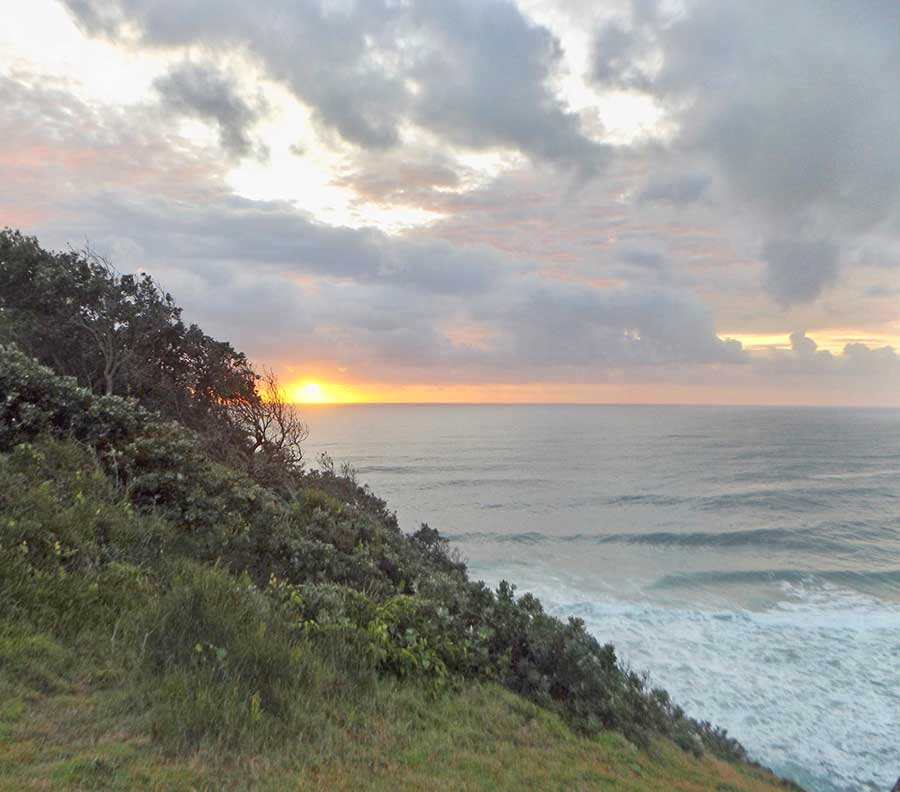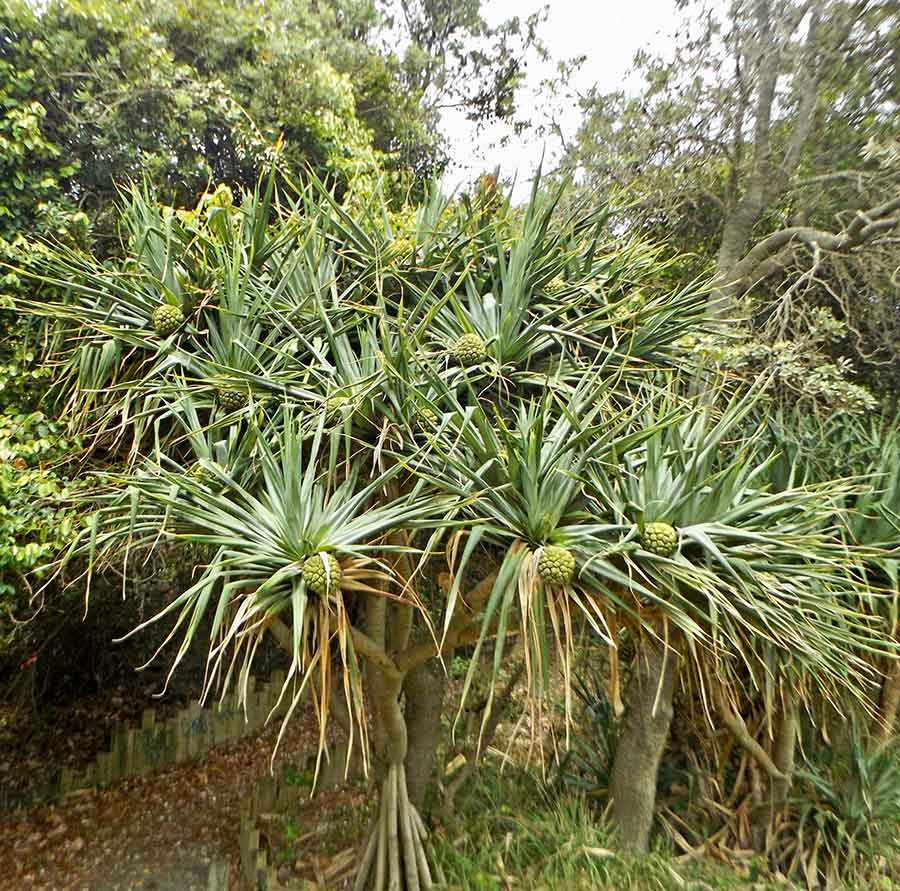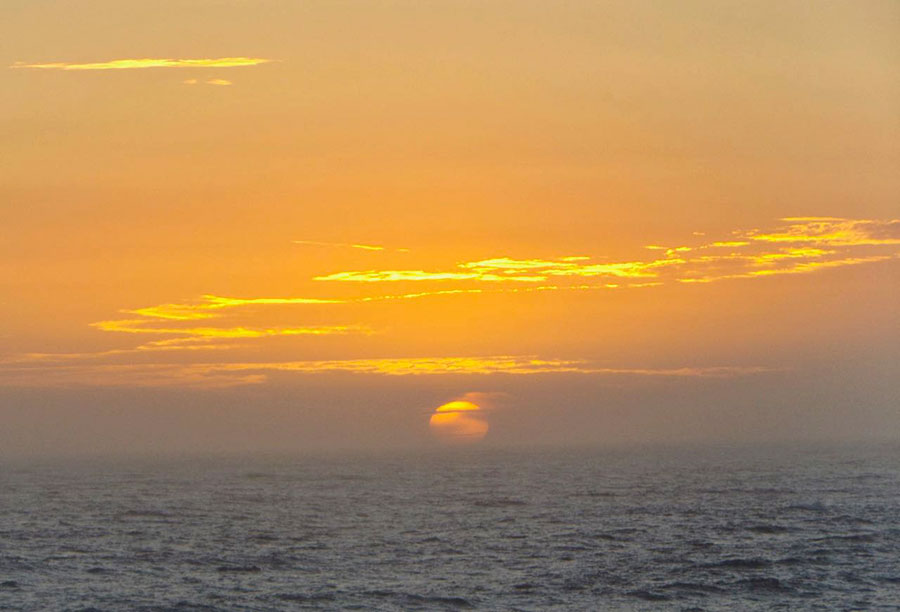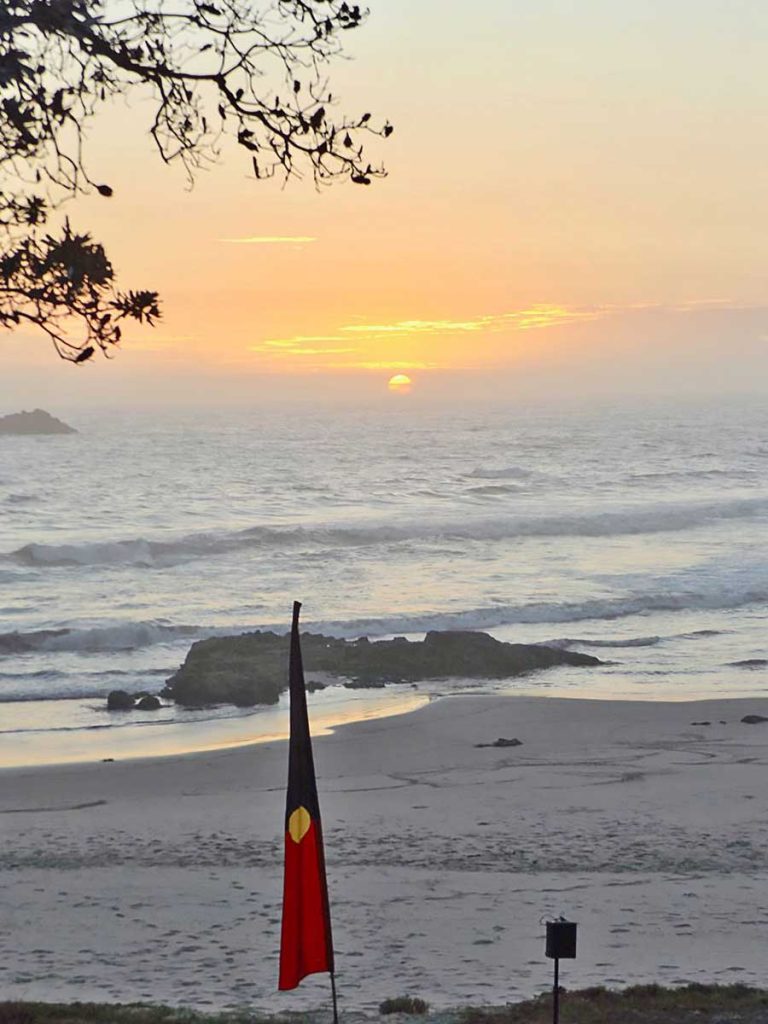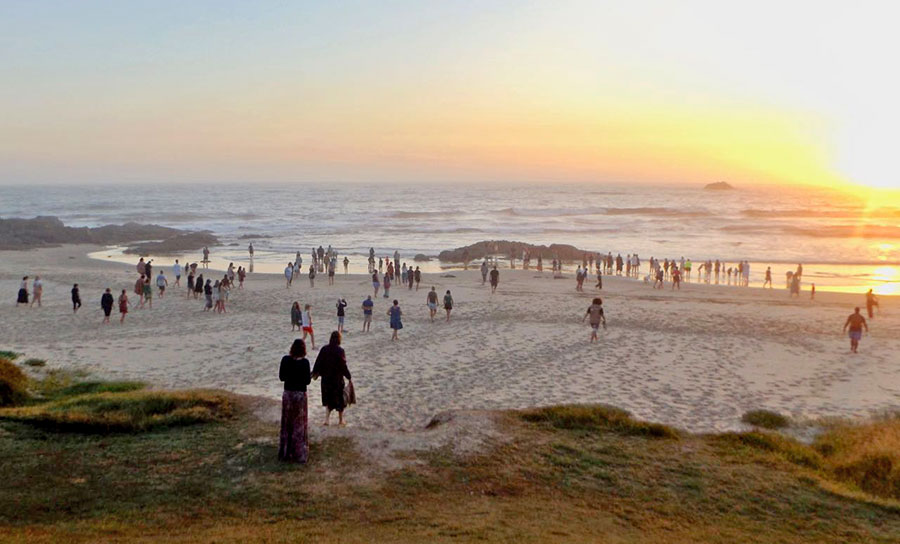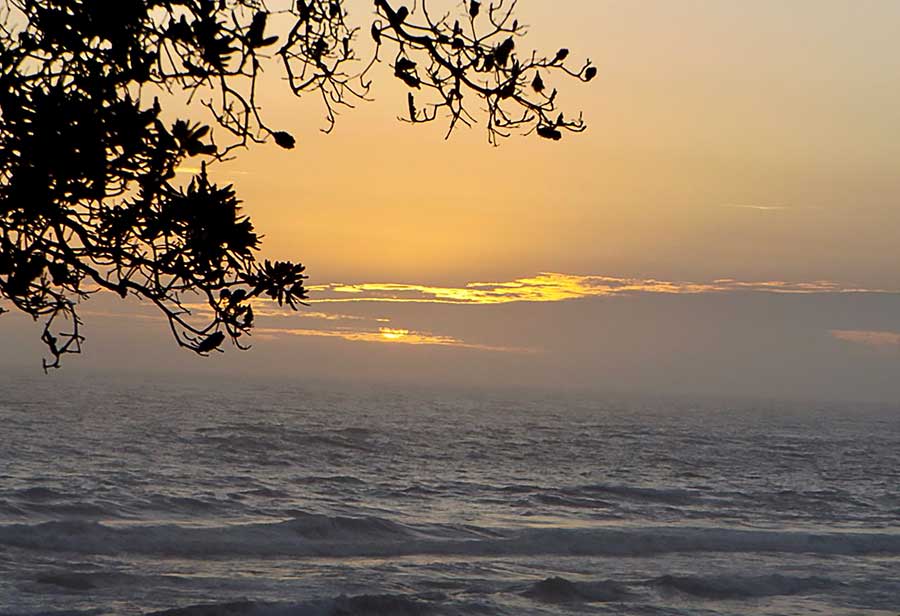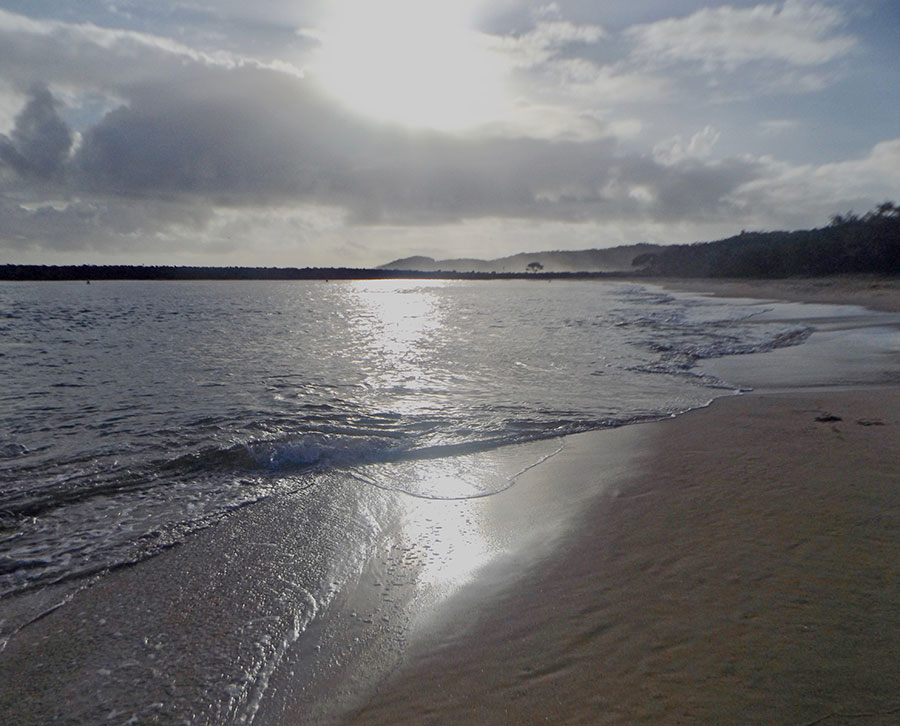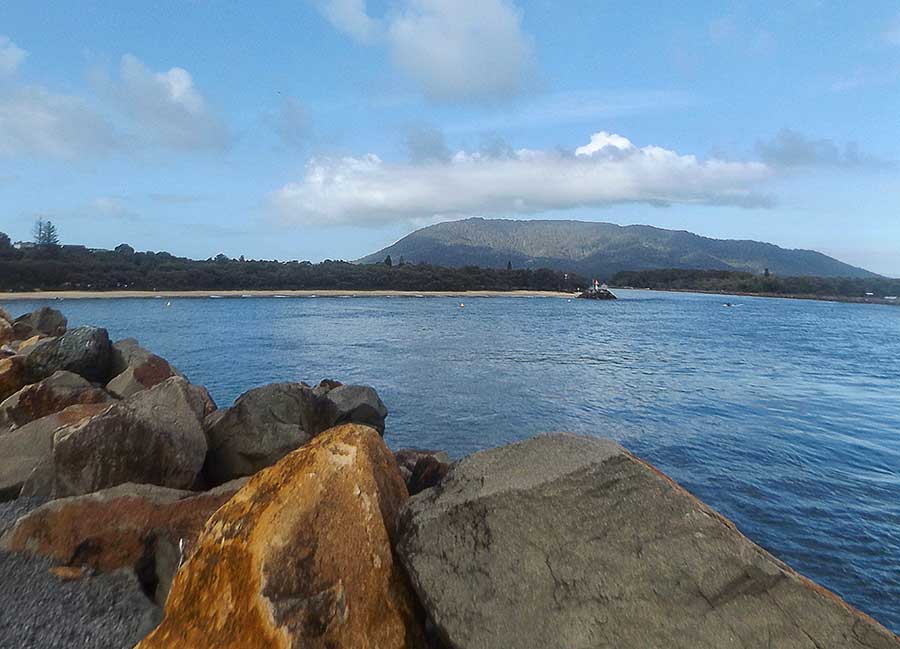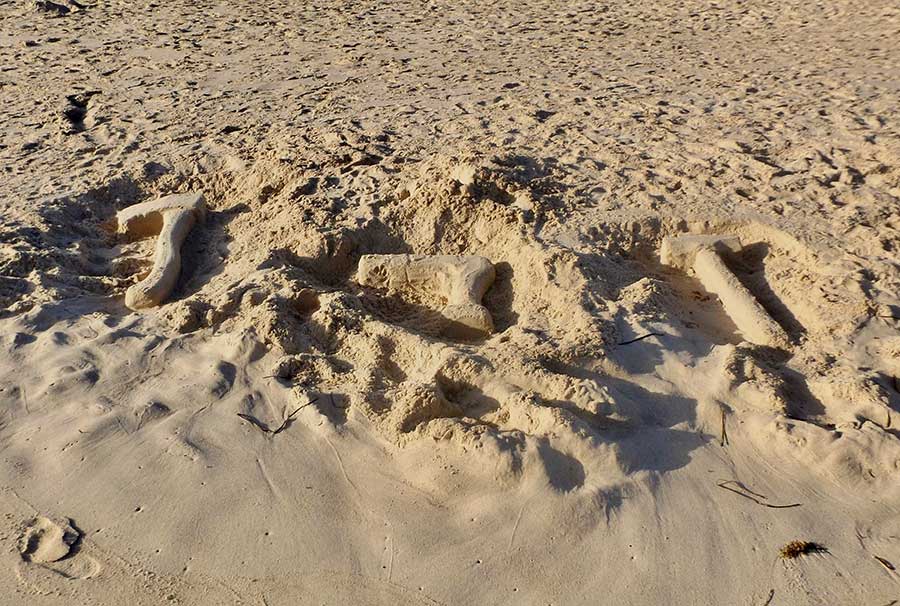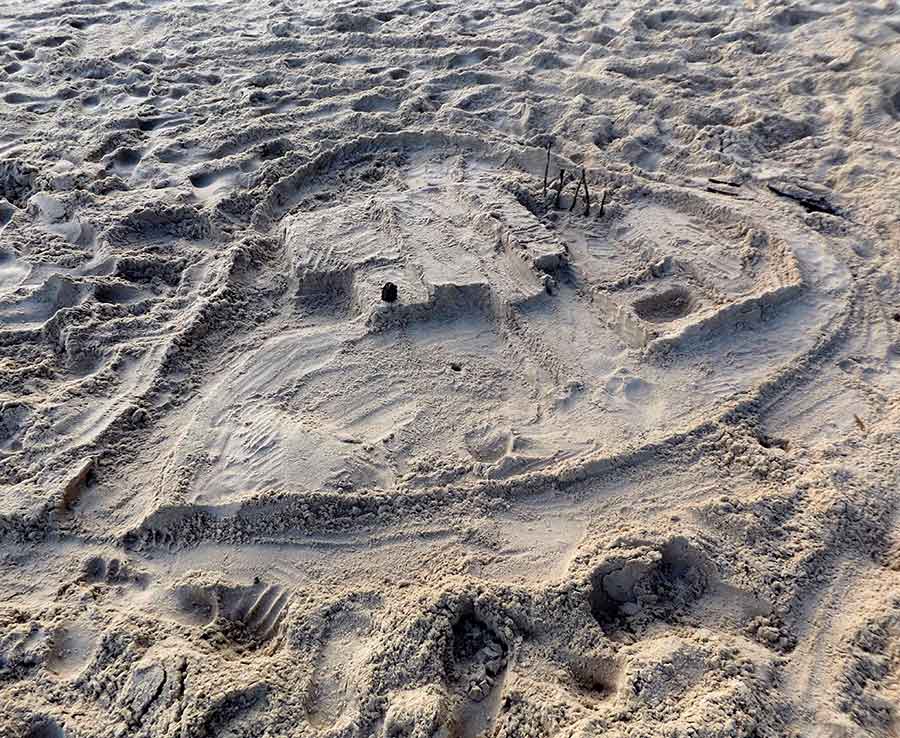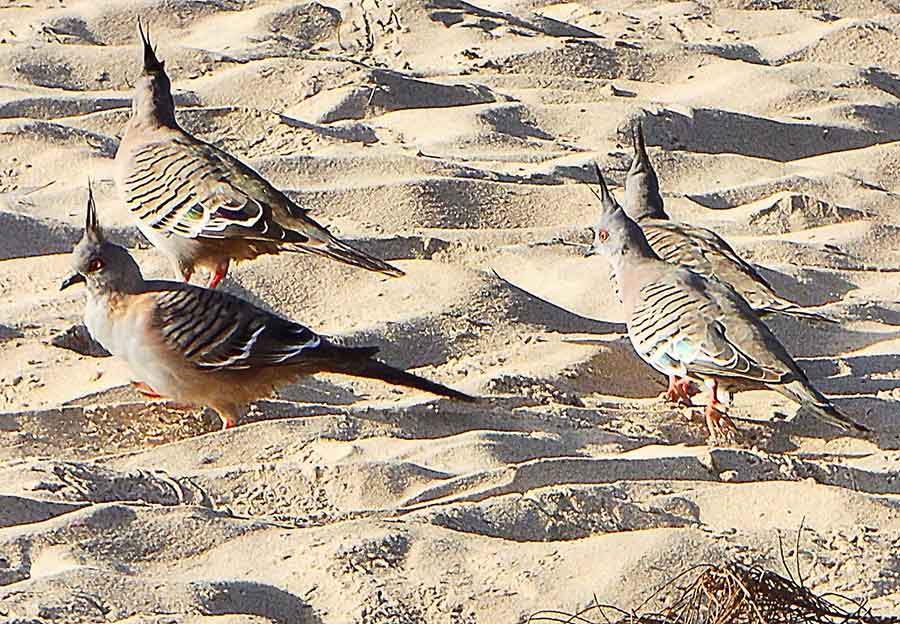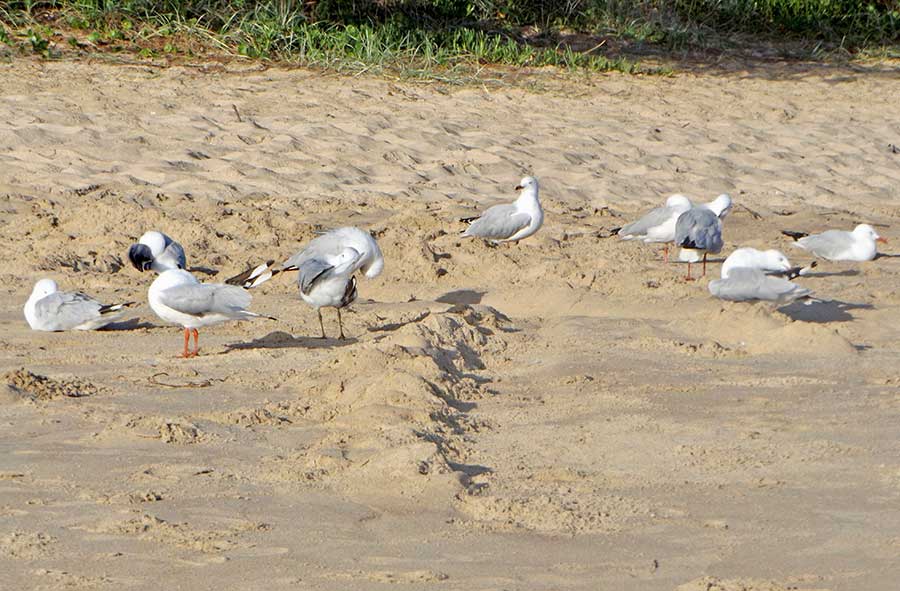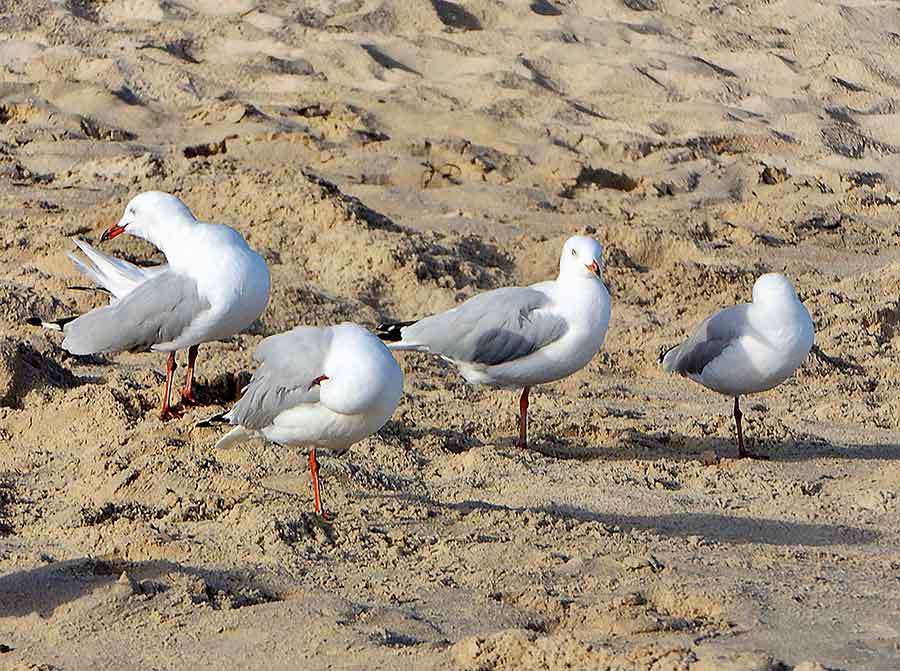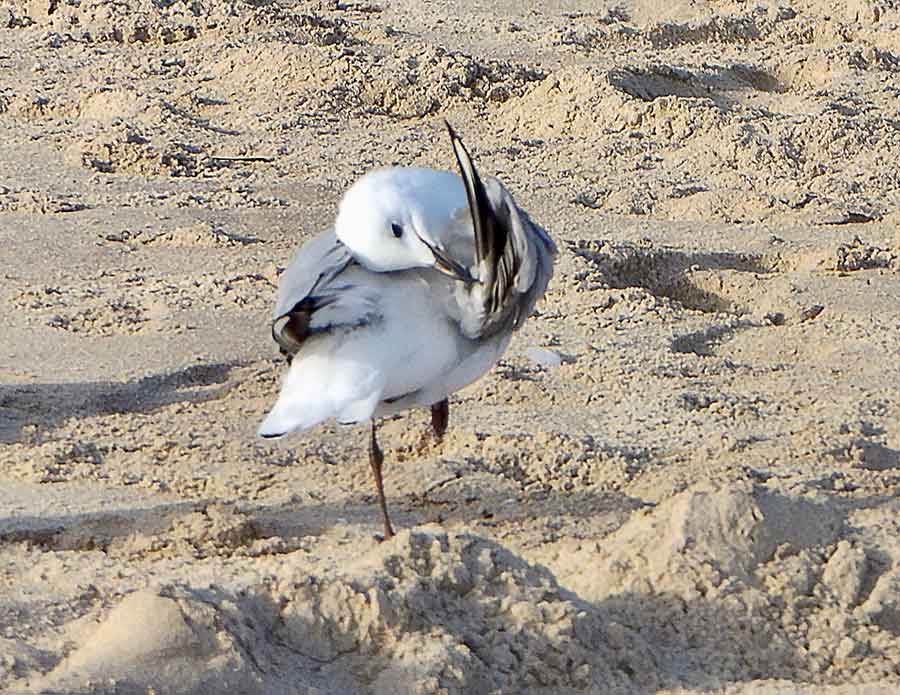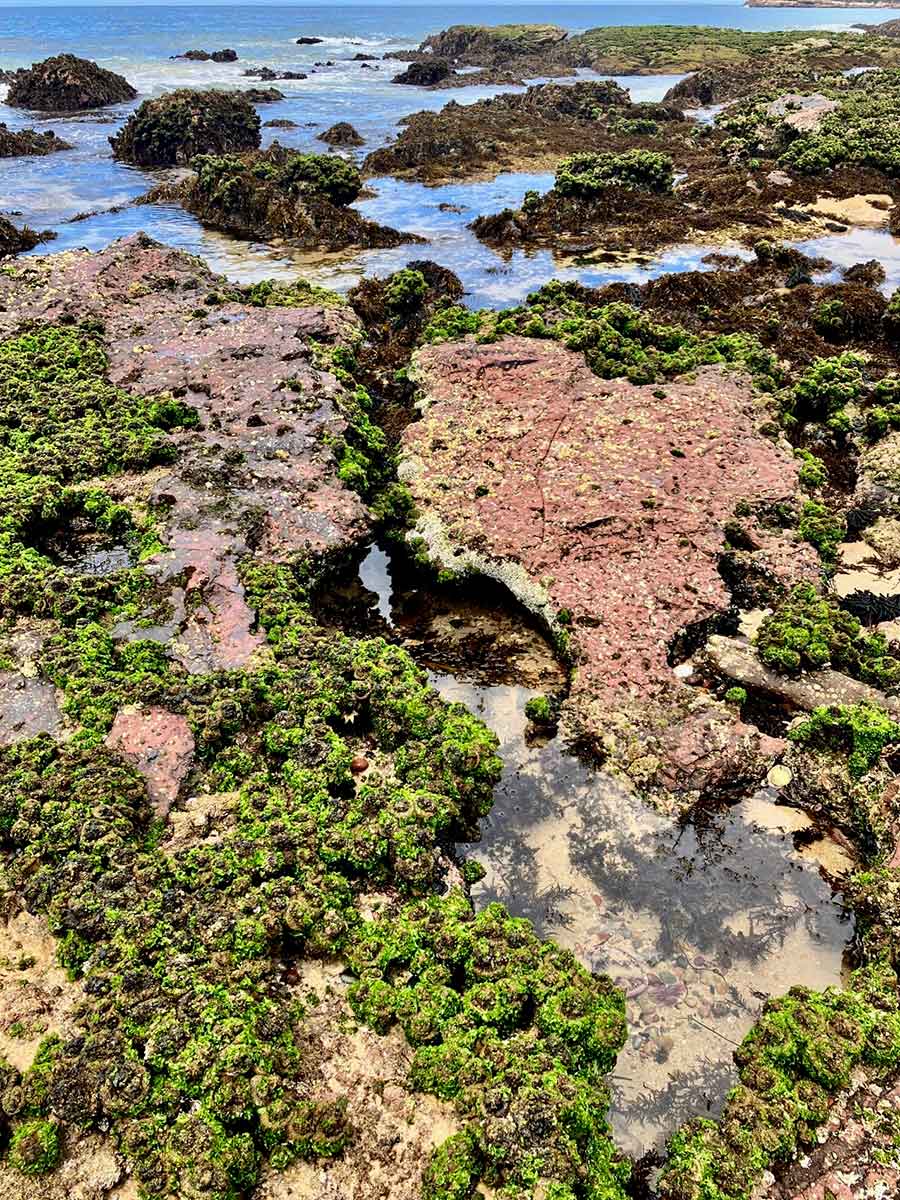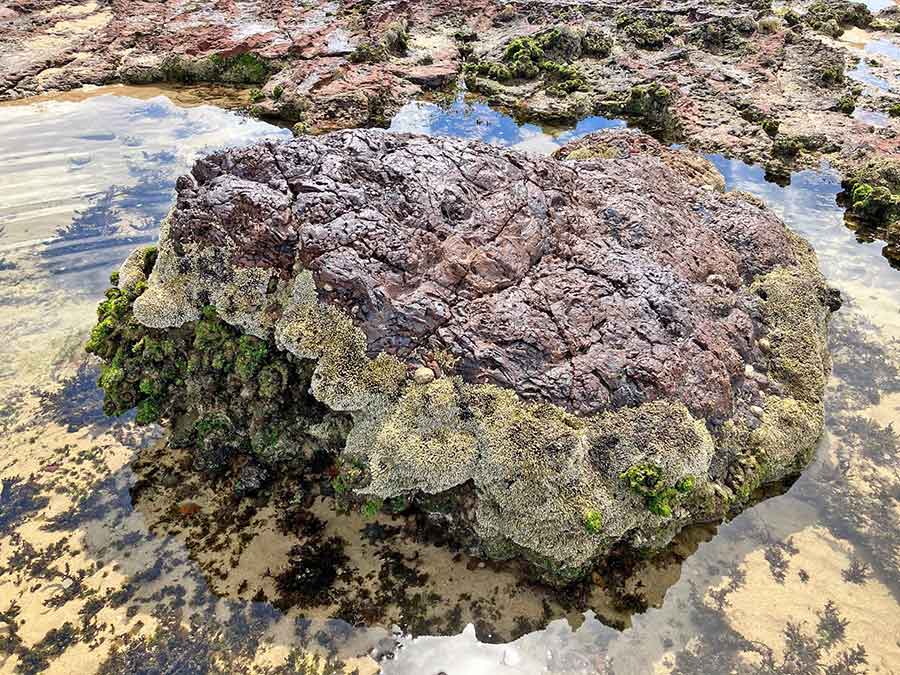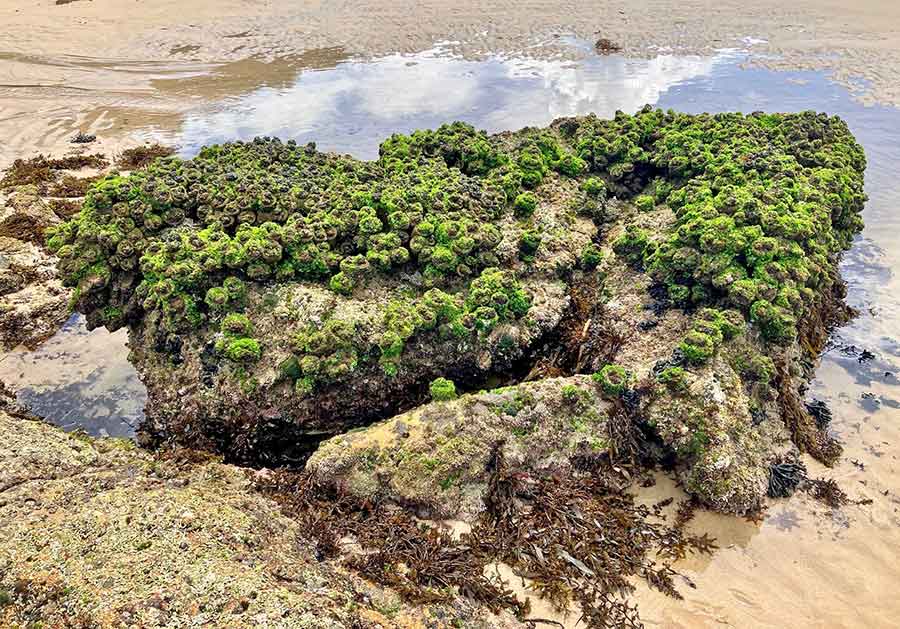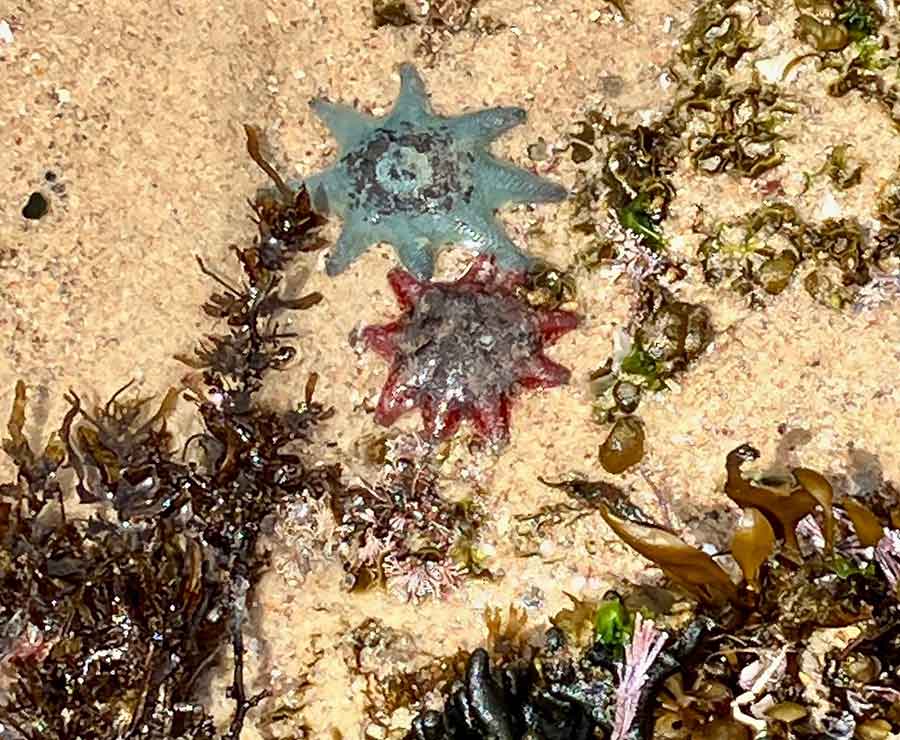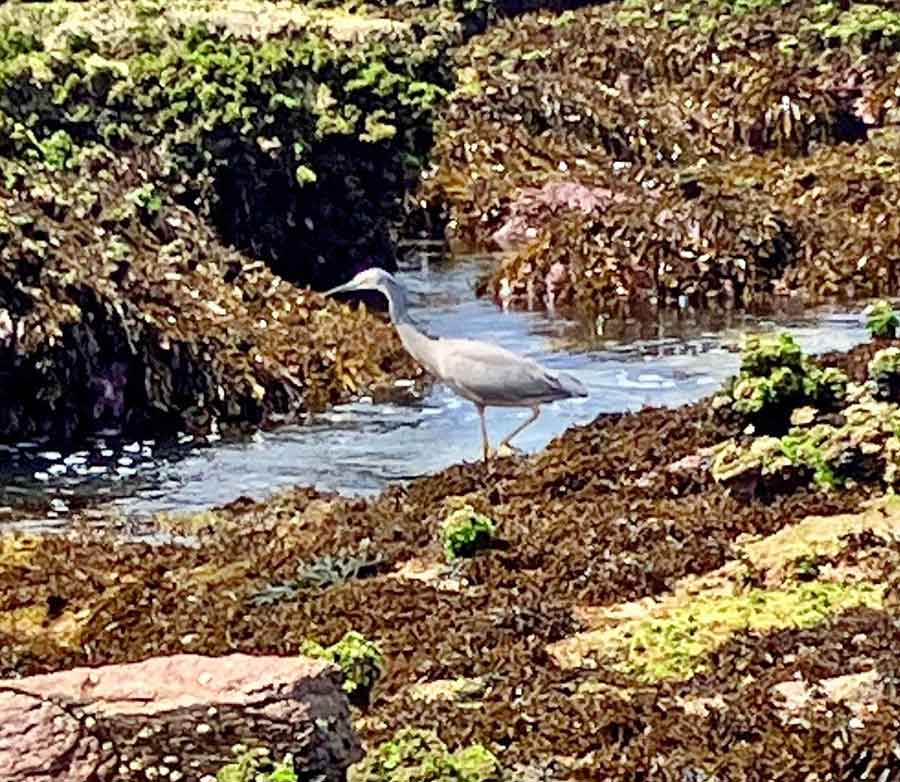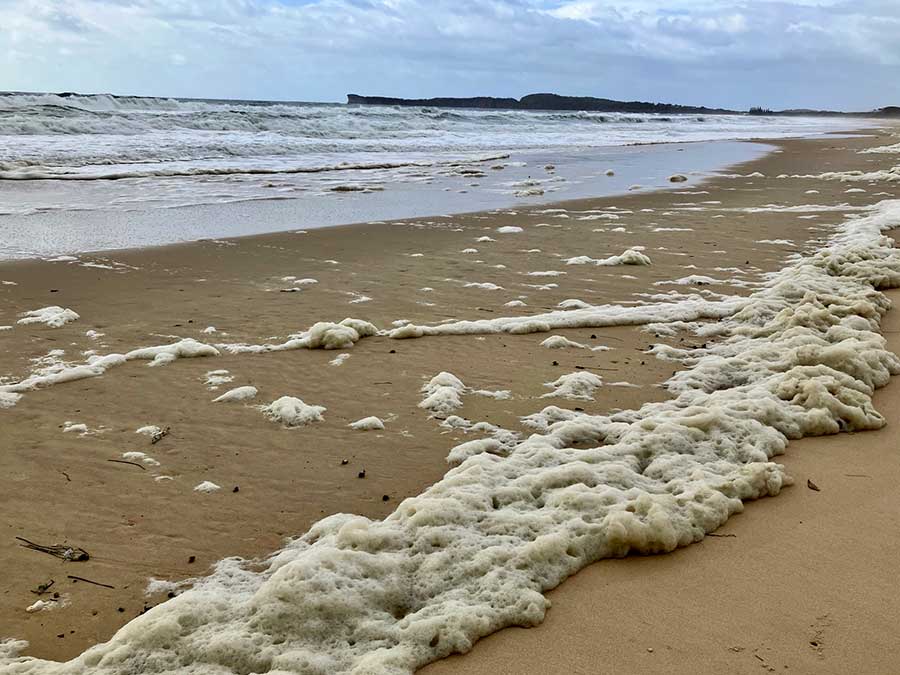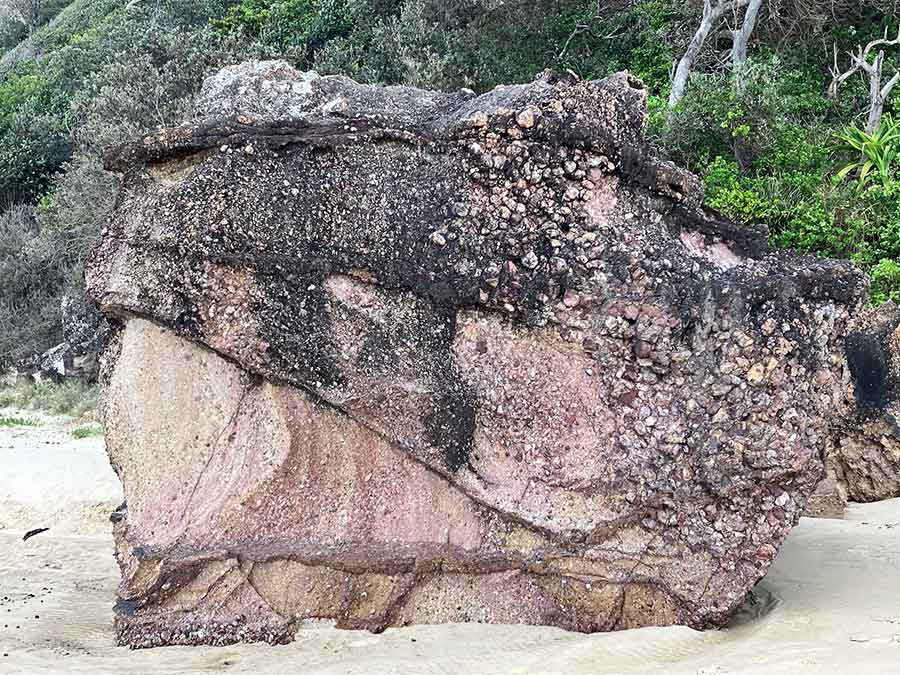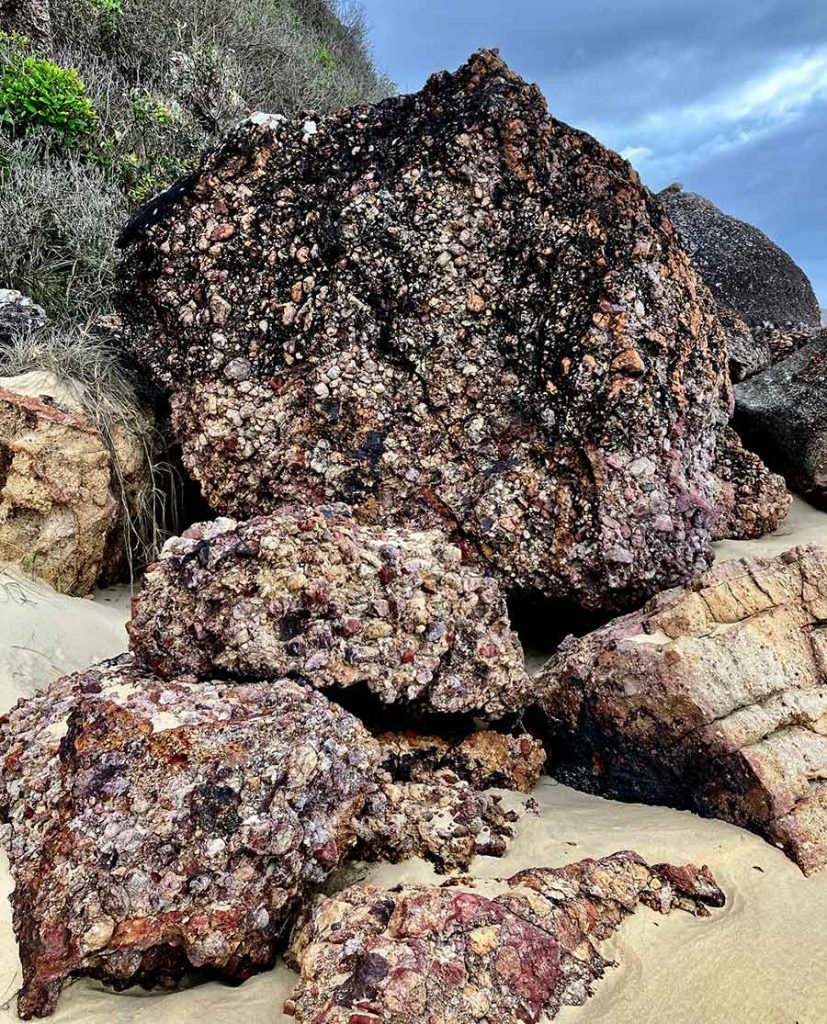Today I dared my first beach walk, after a week flu-bound indoors, basically doing nought but coughing and sleeping.
The beach was pretty empty, although several fishermen were risking the rocks.

The rocks along the Port Macquarie coast are quite harsh and unfriendly in appearance. They are not foot- or hand- friendly either. Such a contrast with the gentle continuous swell that they edge.

There are many scattered ‘rocklets’ creating lacy patterns and sinuous swirls of their own.

There were very few remnant patterns from the tide, but I don’t know the moods of this beach yet.

As this cliff and this beach are close to many flats and houses, I wonder about the content of the drips on several rock faces, where the liquid is like caramel topping, not water.

I am pleased to see a healthy banksia with candles all a-glow, but mainly the beach itself claims my attention.

I sit on the edge of a sandbank and admire the tenacious grass runners. Not much evidence of crab activity, as I was used to at Dunbogan but then I am late here today.
It’s not a dog beach. There are just a few determined walkers, doing the length and back.

I feel so relaxed I could sleep on the sand.
Trying to understand why there is such a sense of peace here, I finally get it.
There are no vehicle tracks, no 4WD scourings, just the tidemarks…
Just Nature.



